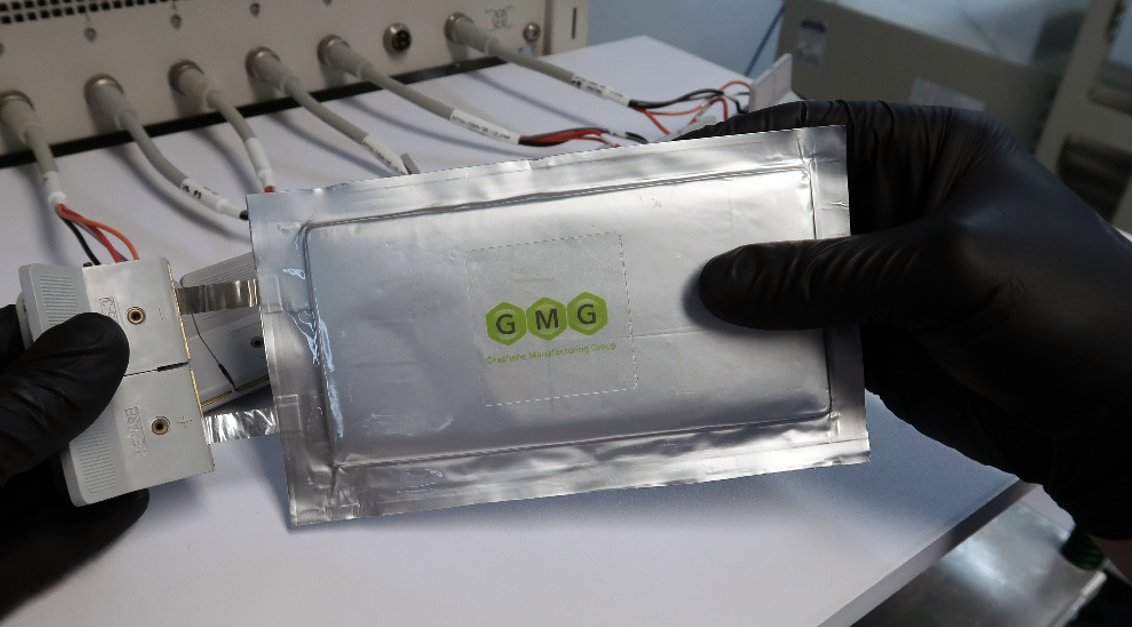Case Study
Posted on

Supported by Australia’s Economic Accelerator (AEA) Seed, battery developer Graphene Manufacturing Group (GMG) has successfully produced multiple aluminium battery pouch cells that more than double the electrical charge capacity of previous tests.
The global demand for batteries is set to quadruple by 2030 as the world transitions to net zero.
The Australian Government’s National Battery Strategy maps a path for Australia to take advantage of this growth by building a thriving battery industry.
It shows how Australia can help diversify global battery supply chains by working collaboratively with key trading partners and solidify our economic resilience in our national interest.
The strategy is designed to harness our world-leading expertise in battery technology, lean into our natural advantage with critical minerals and support a Future Made in Australia.
Underpinning this, Queensland-based GMG and University of Queensland (UQ) researchers are working to bring a new type of rechargeable battery to market by leveraging a patented graphene processing technique developed at the university.
This collaboration is one of nearly a hundred projects supported through the AEA Seed grants which are advancing research commercialisation in priority areas including renewables and low emission technologies.
The new aluminium batteries would not only be rechargeable but also more efficient and potentially cheaper than current options.
GMG has successfully produced multiple aluminium battery pouch cells with capacities exceeding 1000 mAh, a unit of electrical charge, at its Battery Development Centre in Richlands, Queensland.
This marks a significant milestone in the battery’s development as it more than doubles their earlier achievement of 500 mAh capacity in September 2023.
Lead scientist, Dr Xiaodan Huang from UQ’s Australian Institute for Bioengineering and Nanotechnology, said that the project could be a blueprint that jump-starts the local battery manufacturing industry.
“Australia has a rich supply of battery minerals, record-high levels of renewable energy generation and huge demand for affordable energy solutions. But we do not produce batteries or battery-grade chemicals at a commercial level,” Dr Huang said.
Dr Huang continued that the industry partnership with GMG showed how leveraging Australian minerals and investing in battery technologies could be a blueprint for diversified battery manufacturing capabilities.
“The aluminium batteries we are proposing are cost-efficient, safer and faster charging,” he said.
“They will also generate real opportunities for companies like GMG to develop speciality techniques and products to compete in the battery market, resulting in economic benefits—new jobs and new batteries for Australian customers.”
GMG is pleased with the progress of the aluminium battery development in the recent build to confirm repeatability and will continue to focus on making more of these batteries before seeking third-party laboratory battery testing data.
Concurrently, GMG will review a potential investment for the procurement and installation of an automated pouch cell battery pilot plant in its Richlands Australia Facility.
The pilot plant will enable the company to produce pouch cells for potential customers to test in battery packs for different applications.
AEA is a $1.6 billion Australian Government investment aimed at transforming Australia’s research translation and commercialisation landscape.
The program is funding projects that align with national priorities to help take innovative ideas through to proof-of-concept and proof-of-scale as projects progress towards commercialisation and the creation of new businesses.
Follow the AEA LinkedIn page for updates.
